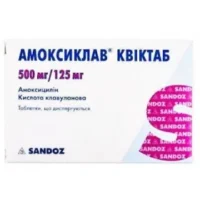Description
Flucorik (Fluconazole) Capsules 150 mg. №1
Ingredients
Active ingredient: Fluconazole 150 mg.
Inactive ingredients: lactose, maize starch, colloidal anhydrous silica, magnesium stearate, sodium lauryl sulfate, gelatin, titanium dioxide (E171), brilliant blue FCF (E133).
Dosage
Recommended dosage: 1 capsule orally once daily.
Do not exceed the recommended dose without consulting a healthcare provider.
Indications
Flucorik (Fluconazole) Capsules 150 mg. №1 is indicated for the treatment of fungal infections including vaginal yeast infections, oral thrush, esophageal candidiasis, and cryptococcal meningitis.
Contraindications
Do not use Flucorik (Fluconazole) Capsules 150 mg. №1 if you are allergic to fluconazole or any other ingredients in the product. Consult your doctor before use if you are pregnant, breastfeeding, or have liver or kidney disease.
Directions
Take Flucorik (Fluconazole) Capsules 150 mg. №1 as directed by your healthcare provider. Swallow the capsule whole with a full glass of water. It can be taken with or without food.
Scientific Evidence
Fluconazole, the active ingredient in Flucorik capsules, is a potent antifungal agent that works by inhibiting the synthesis of ergosterol, a key component of fungal cell membranes. Studies have shown fluconazole to be effective in treating various fungal infections, with high cure rates and favorable safety profiles.
Additional Information
It is important to complete the full course of treatment with Flucorik (Fluconazole) Capsules 150 mg. №1 as prescribed by your healthcare provider, even if symptoms improve before the course is finished. Avoid alcohol consumption while taking this medication as it may increase the risk of side effects.
Fluconazole, the active ingredient in Flucorik capsules, is well-absorbed orally and reaches therapeutic concentrations in various body tissues, making it an effective treatment for systemic fungal infections. It is generally well-tolerated, with common side effects including nausea, headache, and abdominal pain.
Clinical trials have demonstrated the efficacy of fluconazole in the treatment of candidiasis, showing comparable or superior outcomes compared to other antifungal agents. Its broad spectrum of activity and convenient dosing regimen make it a preferred choice for many healthcare providers in the management of fungal infections.





